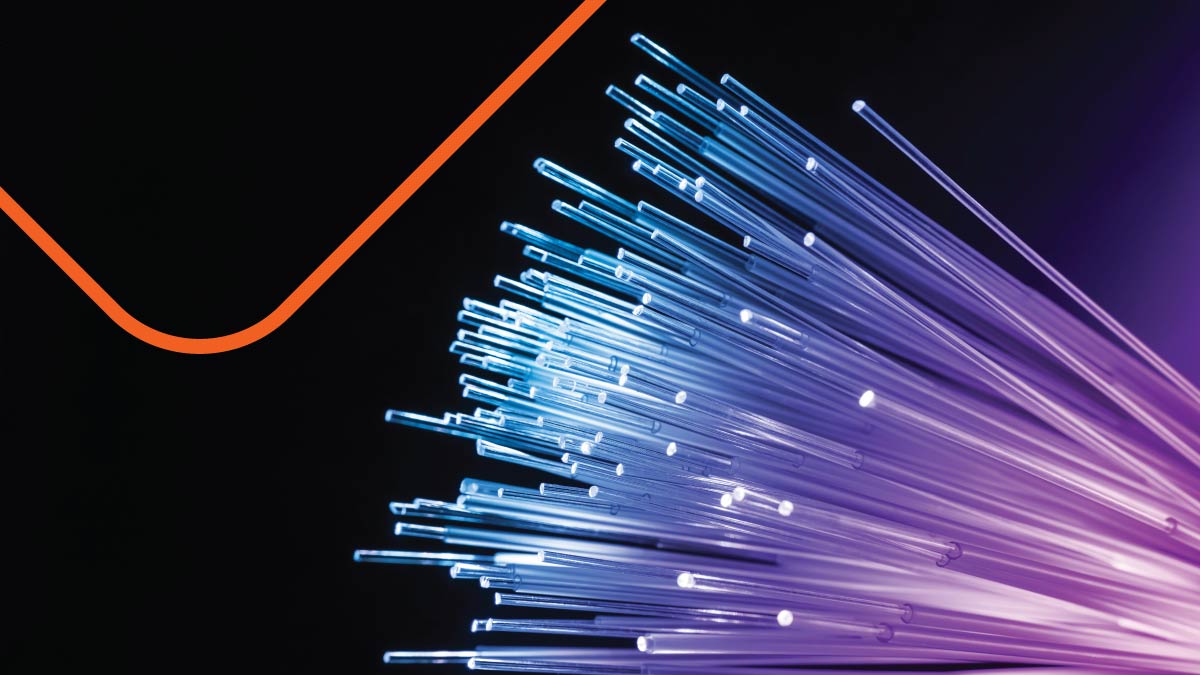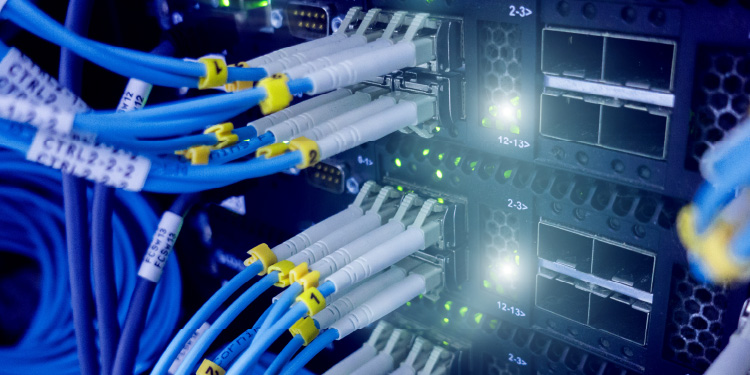
Fiber optic communication has revolutionized the telecommunications industry. Unlike traditional transmission methods that send signals through metallic-based systems, fiber optics are not electrical in nature. The transmission device generates a light signal, which the fiber cable carries to a receiver. The fiber optic thread is not an active source that generates electricity.
Fiber optic connections don’t degrade over distance, unlike cable broadband and DSL, allowing for consistent premium data transfer speeds. However, fiber optic connections also come with some limitations. Their high performance is pricey, cost of such service does limit range. Here are the advantages and disadvantages of fiber optic communication networks.

Pros of Fiber Optics
1) Connection Quality: Fiber optics are resistant to electromagnetic interference and have a low rate of bit error. Electromagnetic interference (EMI) is a disturbance caused by electromagnetic radiation from an external source. This disturbance can interrupt or degrade the performance of a conventional metallic cable connection. Any object that carries electrical currents can create interference, such as power lines or even the sun. Fiber optics are also resistant to corrosion.
2) Scalability: Fiber optics are more scalable, as it’s simple to install new equipment can over original fiber. Wavelengths can be turned on or off on demand, which allows for the easy provisioning of services and quick scaling for a growing business. Optical fibers are also much smaller and lighter than copper wiring. These fibers can typically be placed in preparation for growth needs up to 15 to 20 years in the future. Alternatively, additional cables can be installed later to make way for network expansion.
3) Security: Security is a major concern for today’s businesses. Fiber optics do not radiate signals, so there is no way to listen in on the transmissions passing through. Breaches are also easy to identify as soon as they occur, as any physical break in the system will cause a total system failure. Instead of hardware in several locations, fiber optic networks allow you to keep hardware in one location. This makes regulation and maintenance much simpler.
4) Long-Term Cost-Effectiveness: Long term, fiber optic networks do not require the same overhead as copper networks. Fiber optic networks are more expensive upfront. However, the capacity for scalability long-term outweighs the initial investment. As the popularity of fiber optics grows, we are likely to see a decrease in cost over time.
Cons of Fiber Optics
Although fiber optic networks present many advantages, there are also some disadvantages to take into consideration. These include physical damage, cost considerations, structure, and the possibility of a “fiber fuse”.
1) Physical Damage: Fiber is thinner and lighter than metallic wiring, so it makes for a more delicate system. Because fiber optic cables are small, they can be easily cut by accident during building renovations or rewiring. As fiber optic cables can transmit much more data than metallic networks, fewer cables service a greater number of people. This means that cutting just one cable could disrupt service for a large number of businesses and individuals. Fibers are also sensitive to bending, making laying fibers around corners a tricky business. Fiber optic networks are also susceptible to radiation damage or chemical exposure.
2) Short-Term Cost Effectiveness: Although costs are lower over the long term, fiber installation costs can still cost a pretty penny to implement. Special test equipment is often required along with installers that have skilled knowledge about laying a fiber optic network. Fiber endpoints and connection nexuses also require special equipment and setup. In addition, it may take specialized equipment to diagnose an issue with a fiber optics network, making for higher-cost fixes should the cables sustain damage.
3) Fiber Fuse: At high power, fiber optic networks are also susceptible to something known in the industry as “fiber fuse”. This occurs when too much light meets with an imperfection in the fiber. This occurrence can destroy long lengths of cable in a short amount of time.
4) Unidirectional Light Propagation: Fiber cables are also limited in the sense that they can only propagate light in one direction. If bidirectional communication is a necessary part of information transmission within a network, two concurrent cables must be laid in order to achieve bidirectional propagation of information.
Although there are some disadvantages to having a fiber optic network, the technology is quickly taking the market by storm, and prices continue to drop significantly. Industry experts anticipate the compound annual growth rate of the fiber optics industry will be 9.8% by 2021.
Find Fiber Optic Technicians
If you’re looking to make the switch to fiber optics, you can connect with 20,000+ fiber optic technicians on the Field Nation marketplace to complete projects at commercial and industrial site locations. Not sure if you’re ready to make the investment just yet? You can also find 82,000+ networking technicians, skilled in installing, maintaining, and troubleshooting traditional metallic-based systems, on the Field Nation marketplace.






